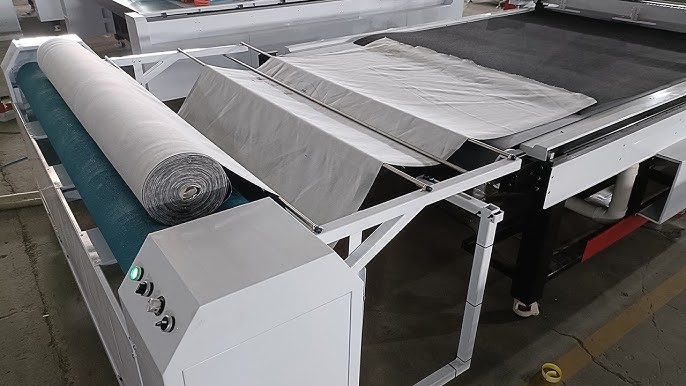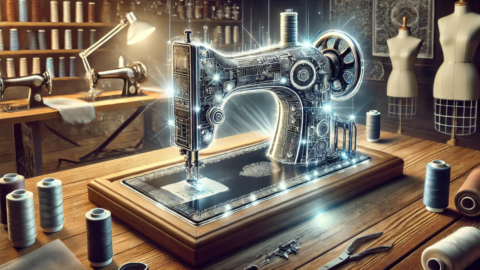Introduction
Ever tried cutting fabric with dull scissors and ended up with jagged edges and wasted material? Yeah, we’ve all been there. If you’re into upholstery, tailoring, or crafting, then investing in the right fabric cutter is a total game-changer. This guide will walk you through everything you need to know about upholstery fabric cutting, from choosing the right tools to nailing perfect cuts every time.
What Are Fabric Cutters?
Definition and Importance
Fabric cutters are specialized tools designed to cut textiles with precision and ease. Whether you’re working on upholstery, quilting, or sewing, these tools help you get consistent results without straining your hands or wasting material.
Types of Fabric Cutters
Let’s break down the different types of fabric cutters available and their uses:
Manual Fabric Cutters
Manual cutters are your classic scissors and shears. They’re great for simple jobs and smaller projects. If you’re just starting out or need portability, manual options are still relevant.
Electric Fabric Cutters
These are motorized tools that glide through fabric like a hot knife through butter. Perfect for heavy-duty jobs, they save time and reduce hand fatigue.
Rotary Cutters
Rotary cutters feature a circular blade and are excellent for straight, long cuts. Popular among quilters, they also work wonders in upholstery with the right mat and ruler.
Understanding Upholstery Fabric Cutting
Why Precision Matters in Upholstery
When it comes to upholstery, precision is everything. Unlike garments, upholstery fabric needs to fit perfectly over furniture, or you risk wrinkles, wasted fabric, or an uneven finish. This is why the cutting stage is absolutely crucial.
Common Challenges in Upholstery Fabric Cutting
- Dealing with thick or layered materials
- Managing patterned or directional fabrics
- Maintaining consistent measurements
- Preventing fraying and jagged edges
Choosing the Right Fabric Cutter for Upholstery
Factors to Consider
Here’s what you should look for when picking the perfect cutter:
- Blade sharpness: Dull blades ruin everything.
- Ergonomics: Comfort matters when you’re cutting for hours.
- Cutting capacity: Can it handle multiple layers?
- Portability: Is it lightweight or heavy-duty?
Best Fabric Cutters for Upholstery Work
Some tried-and-true models include:
- Olfa Rotary Cutters
- Reliable 1500FR Fabric Cutter
- Eastman Chickadee II
- AccuQuilt GO! Big Electric Fabric Cutter
Step-by-Step Guide to Upholstery Fabric Cutting
Preparation and Tools Needed
Before you slice away, gather these essentials: Upholstery fabric cutting
- Measuring tape
- Tailor’s chalk or fabric marker
- Cutting mat (self-healing is best)
- Straight edge or ruler
- Fabric cutter (your chosen tool)
Measuring and Marking Fabric
Take your time here. Measure twice, cut once — that rule exists for a reason. Use chalk or erasable markers to outline your cuts and align patterns if necessary.
Cutting Techniques for Different Fabrics
- Leather: Use a rotary cutter and heavy-duty blade.
- Velvet: Cut from the back to avoid crushing the nap.
- Canvas: Use an electric cutter for thick weaves.
Tips for Accurate and Efficient Fabric Cutting
Avoiding Common Mistakes
- Don’t rush the layout process.
- Always use sharp blades.
- Don’t stack too many layers.
- Avoid using dull or dirty mats.
Maintaining Your Fabric Cutter
- Clean blades regularly.
- Replace blades when they start skipping.
- Lubricate moving parts for electric models.
Benefits of Using High-Quality Fabric Cutters
- Saves time and effort
- Increases accuracy
- Reduces material waste
- Enhances the final look of your upholstery work
Top Brands and Tools to Consider
Recommended Fabric Cutter Brands
- Olfa
- Fiskars
- AccuQuilt
- Reliable
- Eastman
These brands are known for durability, sharp blades, and ergonomic designs.
Upholstery Accessories That Help Cutting
- Pattern weights
- Seam guides
- Fabric clamps
- Anti-slip mats
How Technology is Changing Fabric Cutting
Laser and Digital Fabric Cutters
Laser cutters are being used in commercial upholstery to ensure ultra-precise cuts and minimize waste. While pricey, they’re perfect for large-scale operations.
CAD Software in Upholstery Cutting
Computer-Aided Design (CAD) programs help you map out fabric layouts digitally before making any physical cuts. They’re invaluable for complex upholstery patterns and custom furniture.
Conclusion
There you have it — a complete breakdown of everything you need to know about fabric cutters and upholstery fabric cutting. Whether you’re revamping a chair or working on a client project, the right tools and techniques can elevate your craftsmanship. So go ahead, upgrade your cutter, sharpen those blades, and start cutting like a pro!
FAQs
1. Can I use regular scissors for upholstery fabric cutting?
Technically yes, but it’s not ideal. Regular scissors can dull quickly and won’t give you the precision or clean edges needed for upholstery work.
2. What’s the best fabric cutter for thick upholstery fabric?
Electric fabric cutters like the Eastman Chickadee II are excellent for thicker materials.
3. How often should I change rotary cutter blades?
If you use them frequently, replace the blade every 3–4 weeks or whenever you notice it skipping threads.
4. Is laser fabric cutting suitable for home use?
It’s more suitable for industrial or commercial purposes due to the high cost and maintenance requirements.
5. What’s the biggest mistake beginners make in upholstery fabric cutting?
Rushing the layout and cutting with dull tools — always prep your space and tools before diving in.









